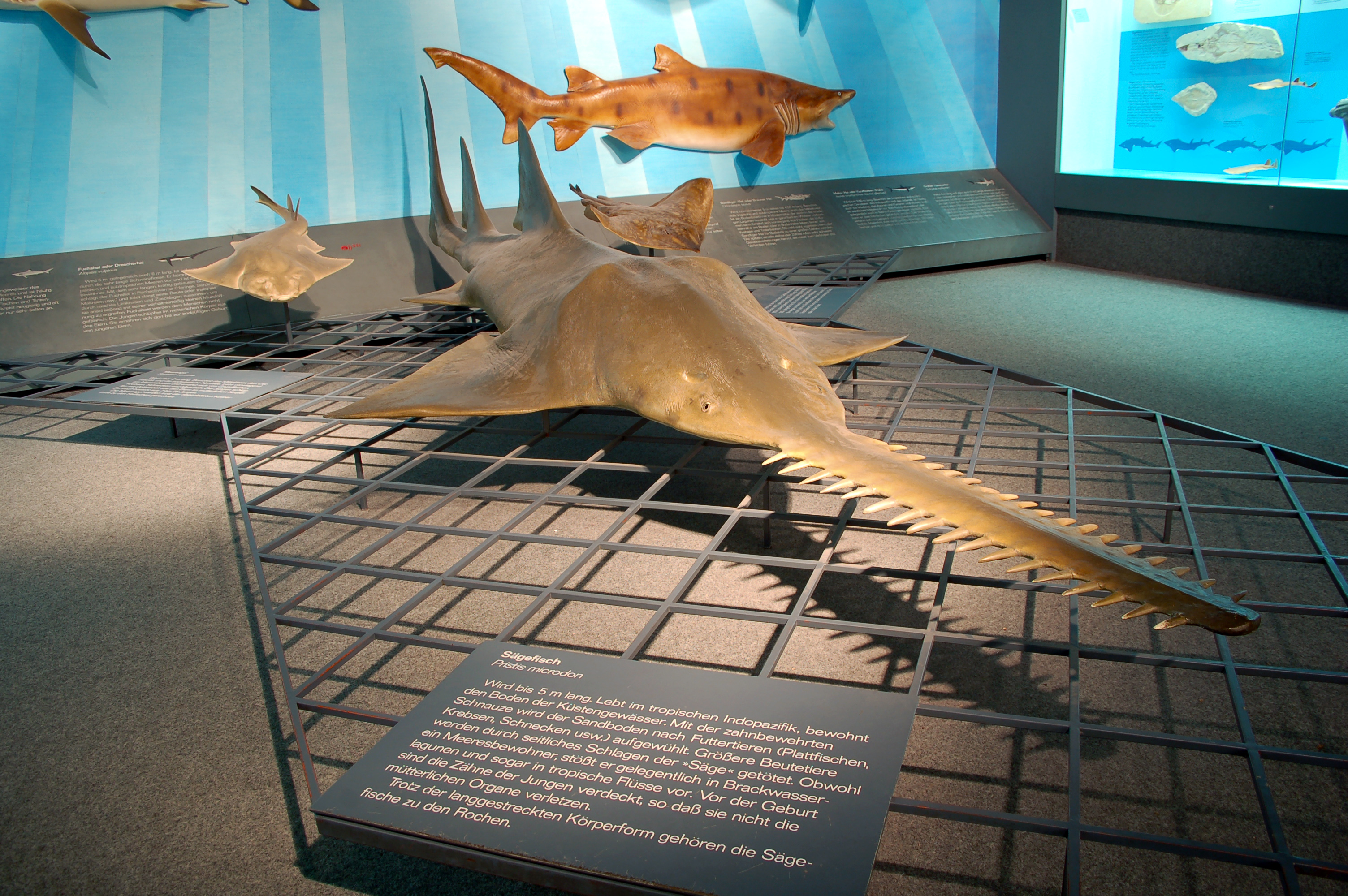- Largetooth sawfish
Taxobox
name = Largetooth sawfish
status = CR | status_system = IUCN3.1
trend =

image_width = 300px
regnum =Animal ia
phylum = Chordata
classis =Chondrichthyes
subclassis =Elasmobranchii
ordo =Pristiformes
familia =Pristidae
genus = "Pristis "
species = "P. microdon"
binomial = "Pristis microdon"
binomial_authority = Latham, 1794The largetooth sawfish, "Pristis microdon", is asawfish of the familyPristidae , found in shallowtropical Indo-West Pacific oceans fromEast Africa toPapua New Guinea , north to thePhilippines andViet Nam , and south toAustralia , betweenlatitude s 11° N and 39° S. Its length is up to 6.5 m.The largetooth sawfish is a U.S. National Marine Fisheries Service [http://www.nmfs.noaa.gov/pr/species/concern/ Species of Concern] . Species of Concern are those species about which the U.S. Government’s National Oceanic and Atmospheric Administration, National Marine Fisheries Service, has some concerns regarding status and threats, but for which insufficient information is available to indicate a need to list the species under the U.S. [http://www.nmfs.noaa.gov/pr/laws/esa/ Endangered Species Act] (ESA).
pecies description
The largetooth sawfish is a heavily-bodied sawfish with a short but massive saw which is broad-based, strongly tapering and with 14 to 22 very large teeth on each side - the space between the last two saw-teeth on the sides are less than twice the space between the first two teeth. The
pectoral fin s are high and angular, the firstdorsal fin being mostly in front of thepelvic fin s, and thecaudal fin has a pronounced lower lobe.Coloration is greenish, grey or golden-brown above, cream below.
Ecology
The largetooth sawfish inhabits sandy or muddy bottoms of shallow coastal waters, estuaries, river mouths and freshwater rivers and lakes. It is usually found in turbid channels of large rivers over soft mud bottoms, occurring in large rivers and estuaries, with adults usually being found in estuaries and young ascending into fresh water. Large adults can also be found in fresh water, but are rarely caught. It feeds on
benthic animals and small schooling species. The saw is used for grubbing and attacking prey as well as for defense. The saws sell as tourist souvenirs. The flesh is marketed salted.Reproduction is
ovoviviparous .Conservation
Incidental commercial catch was likely the most significant factor in the decline of sawfish populations in U.S. waters. Sawfish are extremely vulnerable to overexploitation due to their entanglement in net gear, restricted habitat, and their low intrinsic rate of increase. Habitat degradation likely impacts the species given their inshore distribution.
Conservation designation
IUCN :Critically Endangered tatus reviews
In 2000, NMFS denied a petition to list the largetooth sawfish as threatened or endangered under the Endangered Species Act (65 FR 12959; March 10, 2000) because there was insufficient information presented in the petition and in NMFS files to indicate that a listing might be warranted.
References
* NMFS. Species of Concern Fact sheet [http://www.nmfs.noaa.gov/pr/species/concern/]
Wikimedia Foundation. 2010.
